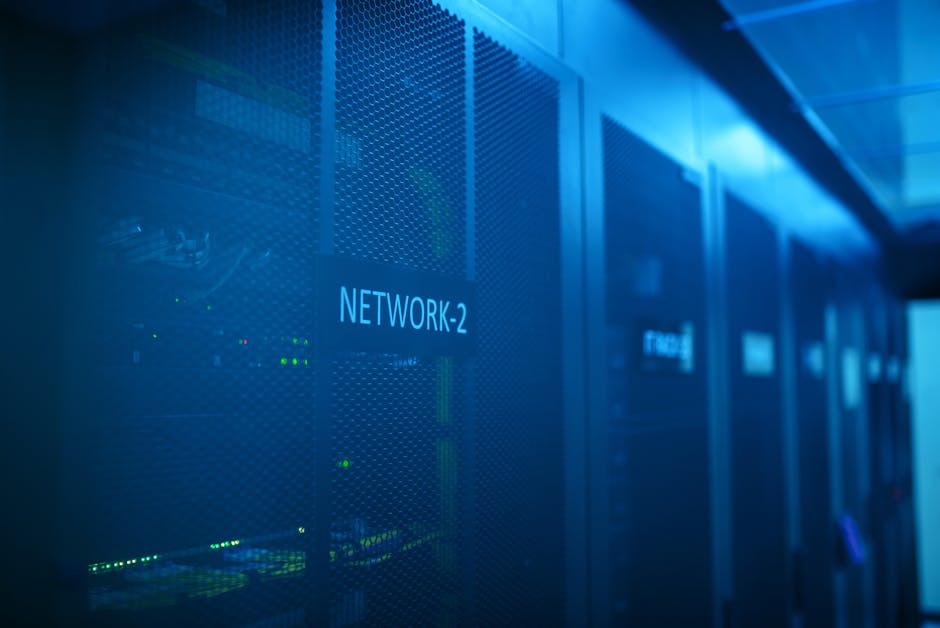Nvidia Q3 Earnings: What the Record Quarter Means for AI Infrastructure
Nvidia reported blockbuster third-quarter results that underscore how AI compute demand continues to reshape the technology landscape. The company posted roughly $57 billion in revenue and a strong GAAP net income figure, with the data-center business producing a record contribution. Executives described unprecedented demand for recent Blackwell-architecture GPUs and highlighted large-scale infrastructure commitments across the cloud, enterprise, and sovereign markets. Below we unpack the numbers, explain the underlying drivers, evaluate the near-term risks, and consider what this means for the broader AI ecosystem.
What drove Nvidia’s record quarter?
At the center of Nvidia’s performance is a surging data-center franchise. Management identified several clear growth levers:
- Explosive data-center demand: Record revenue from data-center GPUs signaled broad adoption of large foundation models and infrastructure builds.
- New-generation Blackwell GPUs: Blackwell Ultra and other Blackwell-family products saw strong uptake across cloud providers and large enterprises.
- AI factory and infrastructure projects: Large commitments for fleets of GPUs from hyperscalers, sovereigns, and modern cloud builders accelerated deployments.
- Compound compute growth: Management emphasized that demand for training and inference is compounding—both workloads are expanding simultaneously.
This combination of new hardware generations, infrastructure projects, and a growing universe of model makers and startups created a near-term surge in revenue that outpaced Street expectations.
How big was the data-center contribution?
Nvidia disclosed that the data-center business delivered a record contribution this quarter. Executives highlighted that data-center revenue represented the lion’s share of the overall top line, with other segments—gaming, professional visualization, and automotive—contributing the remainder. Gaming continued to be a solid, but smaller, revenue pillar compared with data center demand.
Key numbers and segments
While headlines focus on the overall revenue figure, the structural takeaway is clear: AI workloads are driving disproportionate growth for Nvidia’s data-center products. Cloud GPU leasing, enterprise model hosting, and sovereign infrastructure procurements are all magnifying demand.
Why are Blackwell GPUs central to the story?
Blackwell Ultra—part of Nvidia’s Blackwell architecture—emerged as a clear commercial winner in the quarter. Management characterized Blackwell sales as exceptionally strong and noted that cloud GPU capacity has been in short supply. The new generation of chips brings both higher single-chip performance for large-model training and better efficiency for inference, making them attractive across multiple customer segments.
Blackwell’s role in training and inference
Blackwell chips address two critical needs for modern AI infrastructure:
- Training scale: Faster interconnects and larger memory footprints allow teams to train larger foundation models more efficiently.
- Inference economics: Improved performance-per-dollar for inference reduces operational costs for real-time and agentic applications.
Those dual benefits explain why both hyperscalers and startups are prioritizing Blackwell in their procurement plans.
What headwinds emerged this quarter?
Despite the upside, executives were candid about geopolitical and market-specific setbacks. One notable issue was constrained shipments of a specific data-center GPU designed for generative AI and HPC. Management reported shipment volumes that fell short of expectations in certain markets due to regulatory restrictions and heightened competition in China. That reduction in addressable demand for those products held back potential upside in the quarter.
Geopolitics, export controls, and market competition
Geopolitical factors remain an important variable for companies selling advanced compute globally. Restrictions on exports can reduce near-term addressable market size in specific regions, while a more competitive local supply chain in large markets can shift procurement behavior. Nvidia indicated it would continue engaging with governments and stakeholders while seeking paths to compete broadly on performance and price.
What does Nvidia’s guidance imply?
Management issued a strong revenue outlook for the next quarter, projecting sequential growth. That forward-looking guidance underlines the company’s confidence in continued GPU demand, particularly as customers complete infrastructure build-outs and bring new AI services online.
- Supply and backlog: Cloud capacity constraints and pre-commitments for GPU fleets suggest near-term tightness in supply.
- Infrastructure cadence: Large, multi-quarter build-outs by hyperscalers and sovereign projects should support recurring demand.
Together, these factors create momentum that management expects will persist into the next quarter.
How does this quarter affect the broader AI ecosystem?
Nvidia’s results have ripple effects across cloud providers, chip suppliers, and enterprise AI adopters. More available compute enables more ambitious model development, which in turn creates additional demand for faster, more efficient hardware—an effect companies describe as a virtuous cycle of AI scaling.
Implications for cloud and data-center strategy
Cloud providers that secure early Blackwell capacity gain an advantage for offering high-performance model training and inference products. That dynamic reshapes competitive positioning in cloud AI services and can accelerate adoption of managed model offerings and agentic platforms.
For an in-depth look at how data centers are adapting to AI power demands, see our analysis: Data Center Energy Demand: How AI Centers Reshape Power Use.
What should investors and enterprise buyers watch next?
There are several near-term indicators worth monitoring to understand momentum and risk:
- GPU shipment cadence: Quarterly shipment figures and backlog disclosures will signal whether supply is keeping pace with demand.
- Customer build announcements: New public commitments for multi-million GPU deployments are a leading indicator of sustained infrastructure spending.
- Competition and pricing: Local suppliers and alternative architectures could soften pricing or capture regional share.
- Policy and export developments: Any changes in export controls or government procurement rules will materially affect addressable markets.
Investors should balance the company’s strong growth trajectory with these execution and macro risks when evaluating expectations for revenue and margins.
Risks to the outlook
Key risks that could temper growth include supply-chain disruptions, slower-than-expected customer deployments, intensifying regional competition, and regulatory constraints that limit access to certain markets. Even with robust guidance, these factors could introduce volatility into future results.
How this quarter fits into the industry’s long arc
Nvidia’s performance is both a reflection of and a catalyst for broader AI infrastructure expansion. The company’s dominant position in GPU acceleration and its rapid rollout of generational improvements are central to ongoing scaling of foundation models, multi-agent systems, and enterprise AI applications.
For context on market capitalization and long-term GPU leadership, see our piece on Nvidia’s market position: Nvidia Hits $5 Trillion Market Cap — AI GPU Dominance Grows. And for a view on how major cloud and sovereign investments are influencing data-center capacity, read: Anthropic $50B Data Center Investment to Scale Claude.
Summary: Is this a bubble or sustainable expansion?
Executives framed the results as evidence of durable structural demand rather than a speculative spike. The company pointed to more foundation-model makers, more startups, and cross-industry adoption as signals that compute demand will continue to compound. While talk of an ‘AI bubble’ surfaces periodically, the combination of committed infrastructure projects, generational hardware upgrades, and expanding model complexity supports a narrative of sustained expansion—so long as supply, regulatory access, and competition are managed effectively.
What should you do now?
If you’re an enterprise architect planning AI deployments, prioritize early engagement with cloud partners for Blackwell-class capacity and assess hybrid strategies that combine on-prem and cloud accelerators. If you’re an investor, weigh Nvidia’s near-term momentum against execution risks and market concentration concerns. Finally, for policymakers and data-center operators, the quarter underscores the urgency of planning for energy, cooling, and supply-chain implications at scale.
Takeaways
- Nvidia’s Q3 demonstrates how generational GPUs and infrastructure commitments are accelerating AI compute demand.
- Blackwell GPUs are a major revenue driver, creating tight cloud capacity and compelling upgrade cycles.
- Geopolitical constraints and regional competition remain wildcards for near-term shipment potential.
Want ongoing coverage and deeper analysis?
Subscribe to our newsletter for weekly breakdowns of AI infrastructure trends, earnings analysis, and policy developments. Stay informed about GPU supply dynamics, data-center buildouts, and what the expansion of foundation models means for enterprises and investors.
Call to action: Subscribe now to receive the latest reports and expert analysis on AI infrastructure and GPU market developments.






